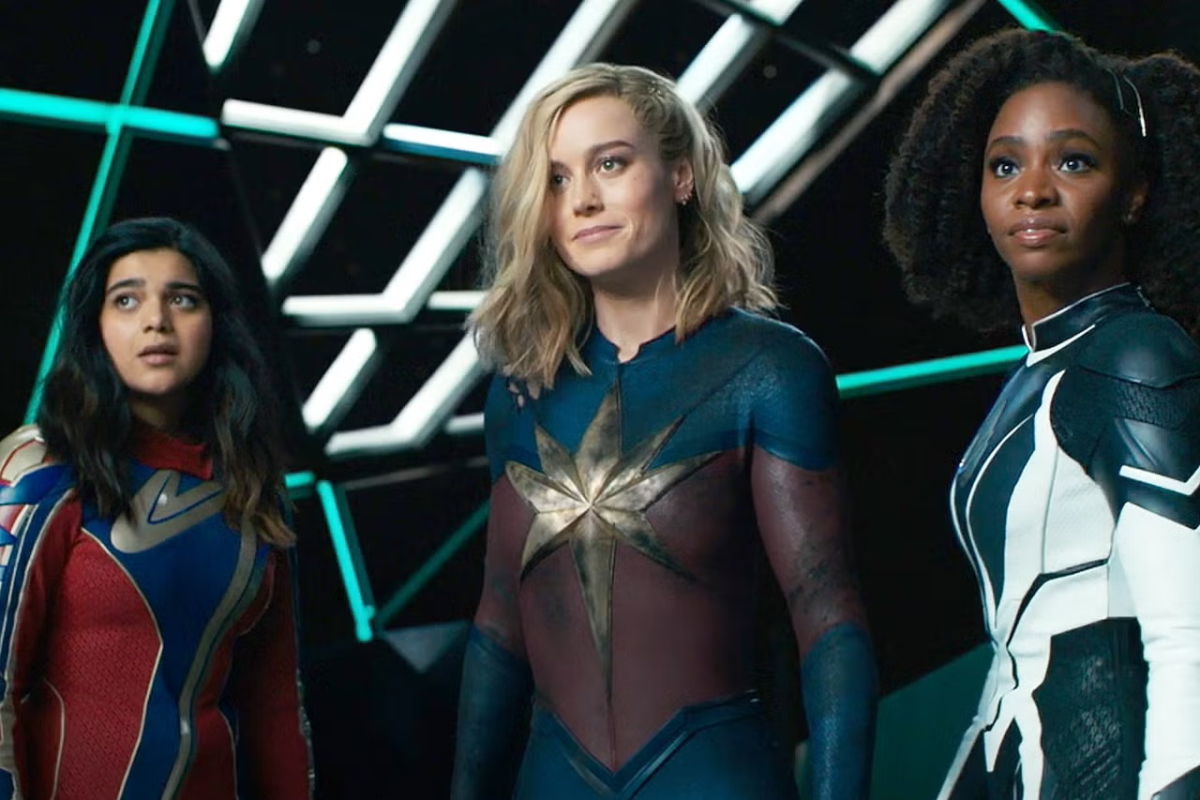MCU
The Marvels: A Messy Marvel, Yet a Potential Savior
To cut through the Marvel Cinematic Universe’s extensive roster of 33 films, including even the overlooked Ed Norton Hulk, requires a blend of sunk-cost fallacy, inertia, and a touch of the Nerd Tax. The notion that every Marvel movie must be seen has persisted, fueled by the hope that the next one might improve the overall experience. Yet, with each recent MCU entry, the magic of the interconnected universe has started to wear thin. The films often feel disjointed, made for television, and excessively referential, leaving audiences questioning why they didn’t just wait for an in-flight screening.
Enter “The Marvels,” a new addition that brings two fantastic musical numbers, three compelling leads, and several enjoyable action sequences. However, it doesn’t escape the pitfalls of excessive CGI, mundane lore-dump flashbacks, and moments where the absence of Brie Larson leaves viewers staring at an obvious stand-in. The film follows Carol Danvers, portrayed by Larson, dealing with an unusual side effect of her superpowers, leading to teleportation exchanges with two characters with similar abilities, Monica Rambeau (Parris) and Ms. Marvel, played by Vellani.
Despite its inconsistencies, “The Marvels” excels in discarding Carol’s previously lackluster personality, allowing Larson to showcase her inner goofiness. The film, set 30 years after “Captain Marvel,” suggests that Carol has spent decades trying to atone for almost causing a global catastrophe, leading to a more enjoyable character portrayal. The viewing experience of recent MCU entries mirrors the confusion of reading convoluted 1980s Marvel comics, with convoluted, universe-spanning storylines and layers of uninteresting material.

“The Marvels” offers hope for improvement, displaying moments where director Nia DaCosta seems to have had more creative freedom. Scenes involving the Flerkens, a carnivorous alien species, and a captivating sequence aboard Captain Marvel’s spaceship stand out from the typical MCU formula. The film deviates from the expected tone, providing glimpses of potential innovation. However, the movie’s predicted underperformance at the box office prompts reflection on the heavy-handed studio approach.
Marvel’s rise to cultural dominance began with bold bets, such as casting Robert Downey Jr. in “Iron Man.” Present-day challenges, including controversies surrounding Jonathan Majors, a lack of quality control in TV series integration, and a sense of aimlessness in recent installments, may necessitate a reevaluation of the studio’s strategy. While the MCU faces higher expectations, it also grapples with the absence of visionary creators like Jack Kirby.
Marvel’s insistence on hiring visionaries may not always yield optimal results, as demonstrated by DaCosta’s next project, an adaptation of Ibsen’s “Hedda Gabler” with MCU veteran Tessa Thompson. It’s a departure from the expected superhero fare and suggests a potential avenue for fresh, creative exploration within the Marvel universe. As Kevin Feige takes risks, including entrusting a French-Algerian director for a Blade movie, the studio has the opportunity to let creativity flourish, embracing a new era that goes beyond the traditional superhero narrative.
We bring out some of the most well-known MCU collection, all of which are available at reasonable costs. Visit our link now if you are interested in the MCU collection


Falcon, War Machine, Vision, Hawkeye, Nick Fury

